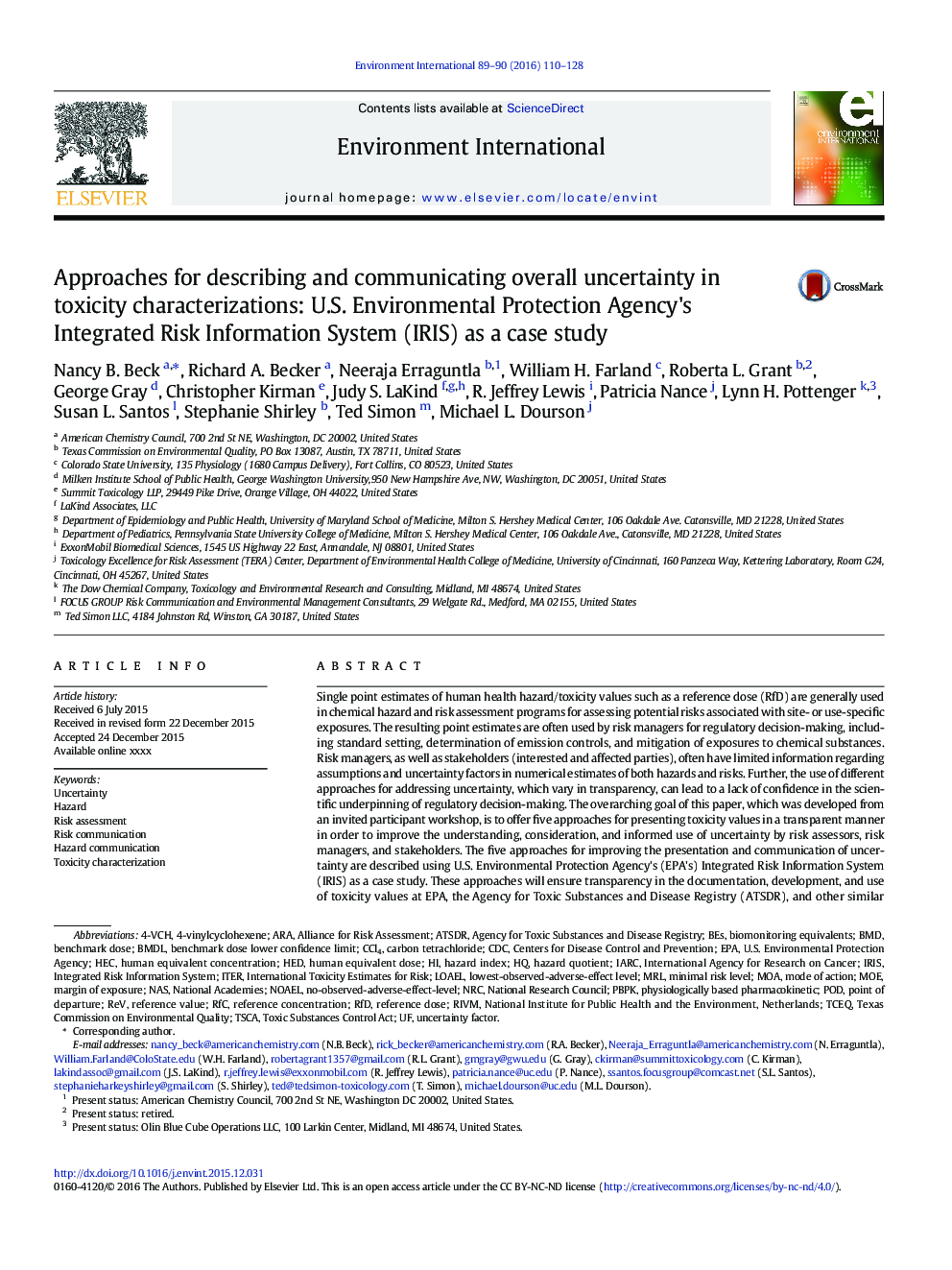| Article ID | Journal | Published Year | Pages | File Type |
|---|---|---|---|---|
| 6313144 | Environment International | 2016 | 19 Pages |
Abstract
Single point estimates of human health hazard/toxicity values such as a reference dose (RfD) are generally used in chemical hazard and risk assessment programs for assessing potential risks associated with site- or use-specific exposures. The resulting point estimates are often used by risk managers for regulatory decision-making, including standard setting, determination of emission controls, and mitigation of exposures to chemical substances. Risk managers, as well as stakeholders (interested and affected parties), often have limited information regarding assumptions and uncertainty factors in numerical estimates of both hazards and risks. Further, the use of different approaches for addressing uncertainty, which vary in transparency, can lead to a lack of confidence in the scientific underpinning of regulatory decision-making. The overarching goal of this paper, which was developed from an invited participant workshop, is to offer five approaches for presenting toxicity values in a transparent manner in order to improve the understanding, consideration, and informed use of uncertainty by risk assessors, risk managers, and stakeholders. The five approaches for improving the presentation and communication of uncertainty are described using U.S. Environmental Protection Agency's (EPA's) Integrated Risk Information System (IRIS) as a case study. These approaches will ensure transparency in the documentation, development, and use of toxicity values at EPA, the Agency for Toxic Substances and Disease Registry (ATSDR), and other similar assessment programs in the public and private sector. Further empirical testing will help to inform the approaches that will work best for specific audiences and situations.
Keywords
HECNOAELLOAELHEDMOARFCBMDLRfDMRLPBPKTSCAATSDRNASCCl4CDCEPARIVMPODNRCBESBMDREV4-vinylcyclohexeneAgency for Toxic Substances and Disease RegistryIARC یا International Agency for Research on CancerInternational Agency for Research on CancerU.S. Environmental Protection AgencyRisk communicationHazard communicationreference valueRisk assessmentMargin of exposureMode of actionMinimal risk levelHazardARAReference dosebenchmark doseHuman equivalent doseITERLowest-observed-adverse-effect levelHazard quotientIntegrated Risk Information SystemHazard indexNational Research CouncilUncertaintyUncertainty factorIrisReference concentrationPhysiologically based pharmacokineticToxic Substances Control ActBenchmark dose lower confidence limitCenters for Disease Control and PreventionBiomonitoring equivalentsPoint of departureno-observed-adverse-effect-levelMOECarbon tetrachloride
Related Topics
Life Sciences
Environmental Science
Environmental Chemistry
Authors
Nancy B. Beck, Richard A. Becker, Neeraja Erraguntla, William H. Farland, Roberta L. Grant, George Gray, Christopher Kirman, Judy S. LaKind, R. Jeffrey Lewis, Patricia Nance, Lynn H. Pottenger, Susan L. Santos, Stephanie Shirley, Ted Simon,
